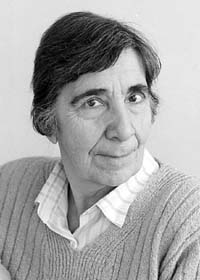Champion Of Reconciliation

Athenagoras I, ecumenical patriarch and archbishop of Constantinople, philosopher, outstanding church politician known for his unprecedented attempts at reconciliation of the Catholic and Orthodox churches, divided and at odds with each other since the eleventh century, died thirty years ago.
Christianity started to divide in the first centuries because of differences in the formulation of dogmas and for church religious reasons. With every division the majority habitually qualified the minority as heretics and forever excluded it from the Christian community (several such churches, including the Armenian Apostolic Church, have survived to this day).
One of the most dramatic divisions took place in 1054 when the bulk of the Christians turned out divided into the Western Catholic and Eastern Churches (Ecumenical Orthodoxy) headed by the patriarch of Constantinople. At the time, the Orthodox Church was backed by the powerful Byzantine Empire, advanced civilization, education, and the majority of the adherents. In contrast, the Roman Catholic Church received the lamentable heritage of scarcely habitable and scantly populated Western Europe, a populace recently baptized or still heathen (at the beginning of the second millennium Constantinople, the Eastern Orthodox capital, was inhabited by over a million, while there was not a single Western European city with a population over 10,000). With time the situation changed the other way around, in terms of both civilization and population.
After the tragic year 1054 all contacts between the Eastern and Western Christians – between churches that had constituted the Apostolic Creed, formed the Divine Tradition, and fought heresies until the eleventh century – were gradually severed. With each passing century the abyss between them grew deeper and less was remembered of their common history, even though both denominations remained essentially very close. John Paul II said that the things uniting us are far more fundamental than those disuniting us.
Athenagoras I was elected ecumenical patriarch in 1948 at the age of 64. Born to a village physician’s family in Vasilikon, near Ioannina, Greece, and baptized Aristokles Spyrou, he had become a theologian, philosopher, often referred to as the Byzantine Socrates. And he was an intrepid champion of human rights and the unity of all Christians. It was his broad world outlook that brought about a true miracle, the historic meeting of the patriarch of Constantinople and Roman Pope.
Patriarch Athenagoras I and Pope Paul VI met in Jerusalem on January 5, 1964. Later, he recalled: “We embraced each other once, then again and again. We were like brothers meeting after a long separation.” They had a long private conversation and then both delegations offered up the Lord’s Prayer, ending it with amen, the Greeks saying it in Latin and the Romans saying it in Greek. The patriarch declared, “The Christian world has grown tired of living for centuries in the darkness of separation. This meeting may become the dawn of a bright day in which future generations of Christians will drink the wine of Communion from the same cup.” As a parting gesture, the Patriarch presented the Pope with his panagia (an encolpion or medallion bearing the image of the Virgin Mary) and Paul IV immediately put it on, aided by Athenagoras I.
Such was the prelude of what would happen the following year. Initiated by Athenagoras I, the event would go down in church history as the revocation of the mutual excommunication decrees of 1054. On that day in 1965 the historic event was accomplished through simultaneous services in St. Peter’s Basilica in Rome and the patriarchal church in Constantinople. On December 7, a joint declaration of the Roman Catholic and Constantinople Orthodox churches on the revocation of the mutual excommunications was read in both temples. Among other things, it held that the Patriarch and the Pope regret and wish to erase from memory all those acts of excommunication, a mere mention of which still impede rapprochement in the spirit of love. They are saddened to admit that those negative precedents, subsequent events, lack of understanding, and mutual distrust finally resulted in a real break in church communication. In making this gesture, the Patriarch and the Pope hoped that it would be duly appreciated by the whole Christian world as an inducement to a dialog, which, God willing, will lead us to a rejuvenated life and full communication in our faith, to fraternal accord and participation in the sacraments. Addressing the faithful who jammed the temple, Athenagoras I declared, “We are determined to erase from our memory and from the life of the Church the excommunication pronounced by Michael Cerularius, Patriarch of Constantinople, and his Synod in 1054.”
It should be noted that the ecumenical policy of Athenagoras I called for much courage, as most Orthodox churches disapproved (and still disapprove) of his efforts to resume normal relationships with the Catholics.
The meeting between Athenagoras I and Paul VI made headlines worldwide, except for the Soviet Union, then the world’s largest Orthodox country. It did not in any way respond to the attempt at reconciliation of the two confessions. Nor were the Orthodox faithful informed of the event, being on the other side of the Iron Curtain. 37 years have now passed. Skeptics say little has changed in the Christian world. But you can travel the road only after embarking on it and making the first step.
– P.S.: Dear Reader, I am regretfully happy to be leaving on vacation. Until we meet again next month!






